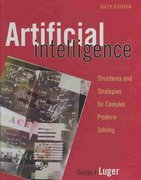Tom has invested some of his savings in a portfolio of five stocks, H = {Bank of
Question:
Tom has invested some of his savings in a portfolio of five stocks, H = {Bank of China, Citibank, Intel, Nokia, Legend}. These stocks can be classified into Bank stocks (Bank of China and Citibank), Hi-tech stocks (Intel, Nokia, and Legend) and China stocks (Bank of China and Legend). You have offered to build an expert system that can give him advice as to how he should manage his stock portfolio. To do so, you interviewed many financial consultants and came up with a set of rules for the expert system. These rules tell Tom how he should divide up his money among the different stocks in his portfolio. The proportions recommended are directly proportional to the probability of the increase of the price of the stocks or the type of stock concerned:
R1: IF the interest rate goes up THEN buy Bank Stocks, Hi-tech stocks and Nokia in the proportion of 0.8, 0.15, and 0.05 respectively.
R2: IF employment rate goes up THEN buy Bank of China, Intel and the Hi-Tech stocks in the proportion of 0.5, 0.2, and 0.3 respectively.
R3: IF the inflation rate comes down THEN buy Intel, Citibank and Hi-Tech stocks in the proportion of 0.1, 0.4 and 0.5 respectively David noticed that the interest rate has just gone up, using Dempster-Shafer's theory of evidence, calculate the belief intervals for the three types of stock, i.e., the Bank stock, the China stock, and the Hi-Tech stock, and for Nokia. Is there any difference in the belief and the belief intervals between Nokia and the Hi-Tech stocks? Why or why not? (This problem was proposed by James Liu Nga Kwok at Hong Kong Polytechnic University, The solution in the Instructor Guide is by a student, Qi Xianming).
Step by Step Answer:

Artificial Intelligence Structures And Strategies For Complex Problem Solving
ISBN: 9780321545893
6th Edition
Authors: George Luger





